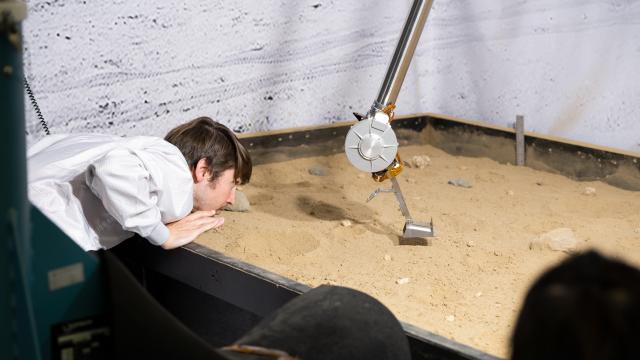It can get cold on the Moon — so cold in fact that these temperatures are likely to impede the abilities of some current NASA engineering. As a result, the space agency is testing out a new mechanical arm that is designed to withstand the frosty temperatures on the Moon ahead of the ongoing Artemis missions.
The 1.98 m-long (2-metre-long) robot arm is being developed and tested at NASA’s Jet Propulsion Laboratory in Southern California as a new tool in the agency’s arsenal for the return to the Moon as part of the ongoing Artemis missions. The arm is called the Cold Operable Lunar Deployable Arm (COLDArm), and NASA says that it can allow future missions to explore the Moon during lunar nights, which last for 14 days. During this time, temperatures on the Moon can drop to minus-280 degrees Fahrenheit (minus-173 Celsius). These chilly temperatures should be no match for COLDArm, however.
“Going to the Moon, we need to be able to operate during colder temperatures, particularly during lunar night, without the use of heaters,” said Ryan McCormick, the project’s principal investigator, in a NASA press release. “COLDArm would let missions continue working and conducting science even in extreme cryogenic environments.”
COLDArm relies on gears made out of bulk metallic glass. This material has an atomic structure that makes it twice as strong as steel and tougher than ceramic, while having more elasticity than both. The metallic glass gears do not require any lubrication, insulation, or heating to operate, which is perfect for the lunar night’s harsh conditions.
The arm also has a six-axis force torque sensor at its wrist, which allows the arm to gauge its movement in all directions, or as NASA puts it: “like a human jiggling a key into a keyhole and turning the lock.” COLDArm also has two commercially available cameras that will be used for 3D mapping. Interestingly, the cameras also have the same sensor that is built into the camera onboard the Ingenuity Mars Helicopter.
COLDArm successfully completed a test run of some experiments this September in a simulated regolith bed at NASA Jet Propulsion Laboratory. The next step is more rigorous testing of the COLDArm in space, with a launch scheduled for the late 2020s.
More: Astrobotic Is Developing a Lunar Rover to Withstand the Moon’s Long, Harsh Night
